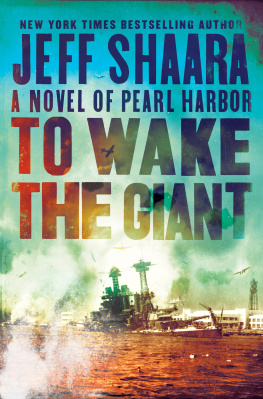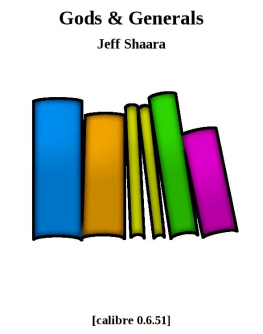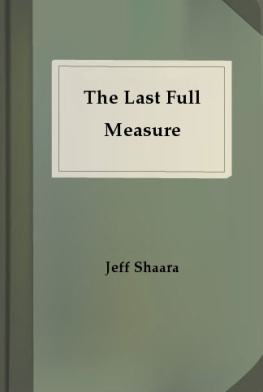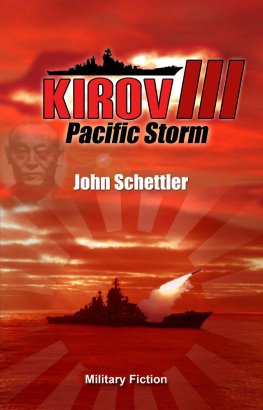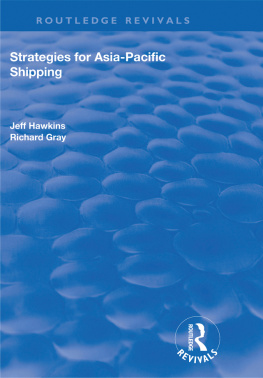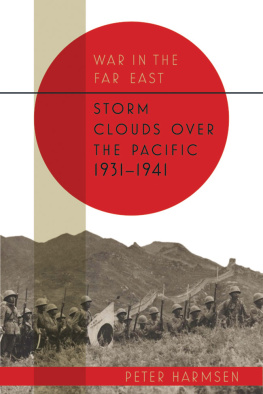Jeff Shaara - The Final Storm: A Novel of the War in the Pacific
Here you can read online Jeff Shaara - The Final Storm: A Novel of the War in the Pacific full text of the book (entire story) in english for free. Download pdf and epub, get meaning, cover and reviews about this ebook. year: 2011, publisher: Random House Publishing Group, genre: Adventure. Description of the work, (preface) as well as reviews are available. Best literature library LitArk.com created for fans of good reading and offers a wide selection of genres:
Romance novel
Science fiction
Adventure
Detective
Science
History
Home and family
Prose
Art
Politics
Computer
Non-fiction
Religion
Business
Children
Humor
Choose a favorite category and find really read worthwhile books. Enjoy immersion in the world of imagination, feel the emotions of the characters or learn something new for yourself, make an fascinating discovery.

- Book:The Final Storm: A Novel of the War in the Pacific
- Author:
- Publisher:Random House Publishing Group
- Genre:
- Year:2011
- Rating:4 / 5
- Favourites:Add to favourites
- Your mark:
- 80
- 1
- 2
- 3
- 4
- 5
The Final Storm: A Novel of the War in the Pacific: summary, description and annotation
We offer to read an annotation, description, summary or preface (depends on what the author of the book "The Final Storm: A Novel of the War in the Pacific" wrote himself). If you haven't found the necessary information about the book — write in the comments, we will try to find it.
The Final Storm: A Novel of the War in the Pacific — read online for free the complete book (whole text) full work
Below is the text of the book, divided by pages. System saving the place of the last page read, allows you to conveniently read the book "The Final Storm: A Novel of the War in the Pacific" online for free, without having to search again every time where you left off. Put a bookmark, and you can go to the page where you finished reading at any time.
Font size:
Interval:
Bookmark:
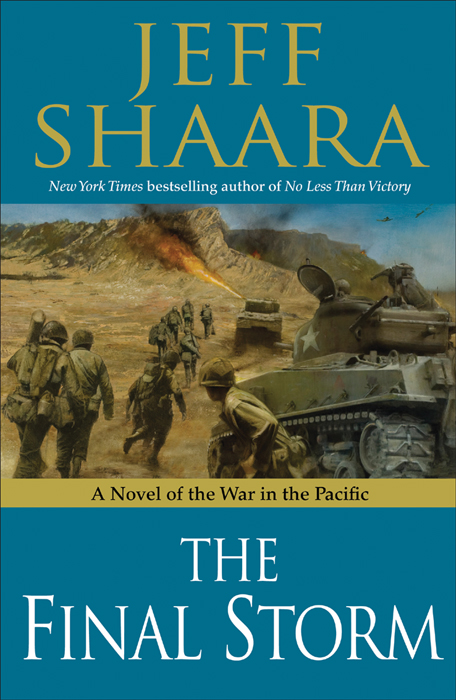
A LSO BY J EFF S HAARA
Gods and Generals
The Last Full Measure
Gone for Soldiers
Rise to Rebellion
The Glorious Cause
To the Last Man
Jeff Shaaras Civil War Battlefields
The Rising Tide
The Steel Wave
No Less Than Victory
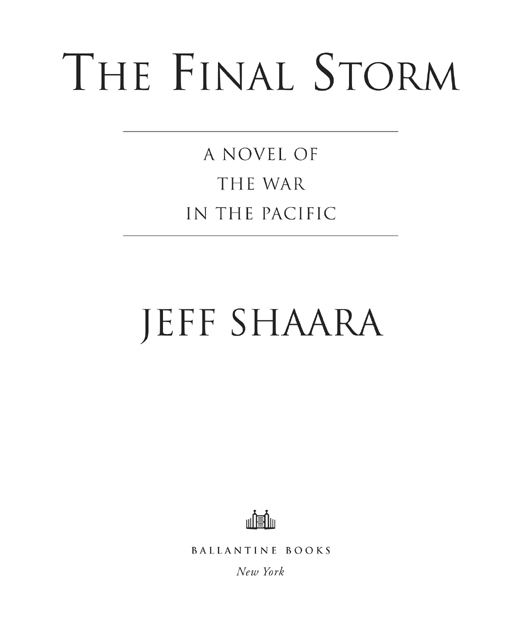
The Final Storm is a work of historical fiction. Apart from the well-known actual people, events, and locales that figure in the narrative, all names, characters, places, and incidents are the products of the authors imagination or are used fictitiously. Any resemblance to current events or locales, or to living persons, is entirely coincidental.
Copyright 2011 by Jeffrey M. Shaara
Maps copyright 2011 by Mapping Specialists
All rights reserved.
Published in the United States by Ballantine Books, an imprint of The Random House Publishing Group, a division of Random House, Inc., New York.
B ALLANTINE and colophon are registered trademarks of Random House, Inc.
LIBRARY OF CONGRESS CATALOGING-IN-PUBLICATION DATA
Shaara, Jeff.
The final storm: a novel of the war in the Pacific / Jeff Shaara.
p. cm.
eISBN: 978-0-345-52643-4
1. World War, 19391945Pacific AreaFiction. 2. World War, 19391945Naval operations, AmericanFiction. 3. Pacific AreaFiction. I. Title.
PS 3569. H 18 F 56 2011 813.54dc22 2011003096
www.ballantinebooks.com
Jacket illustration: Robert Hunt
v3.1
For Brenda At Last
T he story of the end of the war in the Pacific pushes us toward a delicate line between what we know to be simple history (the facts) and what many of us prefer to think should have happened. Sixty-five years after the event, many of us sit in judgment on the way the Second World War was brought to a close, some of us wondering if there could have been a better way, or perhaps a more moral way to end the war. In the American psyche, those debates are likely to continue for a very long time. But those debates will not be found here.
This story attempts to complete what I began in a trilogy that dealt with the war in Europe. Those stories involved Americas first involvement in the fight against the Germans and concluded with the fall of Hitler. Half a world away, there had been another, far more brutal war, against an enemy who was even more successful than Hitler in conquering a vast swath of territory and threatening to slice off an enormous part of the world from our definition of civilization. Had the Japanese been allowed to maintain the empire they sought (and nearly won), all of Asia, including China, Korea, and Indochina, Thailand, Burma, and Malaya, would have become part of an empire that would also have included Australia, New Guinea, the Philippines, Indonesia, and the thousands of islands that spread from those lands all the way east to Hawaii, and north to the Aleutians. What might have followed is speculation, of course. Would the Japanese have invaded the United States (which was one purpose of the conquest of the islands in the Aleutian chain, to serve as a base for such an operation)? Or, strengthened by the raw materials drawn from the riches of the lands under their control, would the Japanese have been strong enough to shove their armies across India, or drive southward to Central and South America?
The urgency of meeting the challenge in the Pacific seemed to many Americans to be secondary to the threat posed to our allies by Hitler. Despite the grotesque insult inflicted upon the United States by the Japanese attack at Pearl Harbor, the government, particularly President Roosevelt, understood that Germanys conquest of Europe, including England, was a more immediate threat. And so greater resources were poured out of American factories toward that part of the world. But the Pacific was hardly ignored. After Pearl Harbor, the United States struck back at the Japanese, and in what now seems an amazing feat, fought both wars simultaneously, against two very different enemies, in two very different ways.
Though my plan had been to complete this story with Europe, I could not just walk away without touching upon the Pacific. (I was also inspired by letters received from a number of Marines, who were quite vocal that ignoring their story was altogether inappropriate. Its hard to disagree.) Some have written to me, expressing frustration that I am not attempting to tell the entire story of the Pacific campaigns through another complete trilogy. There are reasons for that, which include the requirements of my publisher. My choice was to follow No Less Than Victory in rough chronological order, and move through the spring and summer of 1945, to the final collapse of Japan. Thus this story deals with the extraordinary fight on Okinawa, and then, an event unique in world history, the dropping of the atomic bomb on Hiroshima. The points of view vary considerably. Some are familiar: Admiral Chester Nimitz, President Harry Truman. Others are perhaps less well known: Colonel Paul Tibbets, General Mitsuru Ushijima, General Curtis LeMay. And then there are the unknown: Marine Private Clay Adams, Dr. Okiro Hamishita, whose voices have carried me far deeper into this story than I expected to go.
If you are looking for either a strident argument in favor of the atomic bomb, or an apology for American immorality, you will find neither here. This story is told through the eyes of the participants, whose perspectives and decisions and experiences reflected what was happening around them. There is no judgment in hindsight, no moral verdict on my part. That just isnt my job (and never will be). Libraries are filled with volumes that pursue an agenda, political or otherwise, about our role in ending the war. I am merely a storyteller, and this story is as accurate historically as I could make it, told by the voices of the men who made the decisions, who gave the orders, and who took their fight to the enemy. There was only one world for them, a world in which the enemy had to be defeated at all costs. Thats why I wanted to tell this story.
Every day, we lose countless numbers of those who participated in this fight. In every case, when I have spoken with veterans, they remind me that once they are gone, their memories will go with them. Unless, as one GI said, someone tells the damn tale. Fair enough. This is my attempt.
J EFF S HAARA
April 2011
The following is a partial list of those original sources who provided voices for this story:
T HE J APANESE
Dr. Michihiko Hachiya
Saburo Ienaga
Prime Minister Hideki Tojo
Colonel Hiromichi Yahara
T HE A MERICANS
Private First Class George J. Baird, USMC
Jim Boan, Sixth Division, USMC
General Simon Bolivar Buckner, Jr., USA
Sergeant George R. Caron, 509th Composite Group, USAAF
Lieutenant General James V. Edmundson, USAAF
David E. Frederick, USN
Dr. Jack Gennaria, USN
Captain Hank Harmeling, 106th Infantry Division
Sergeant Andrew Hettinga, 164th Regimental Combat Team
Private First Class Irvine Johnson, Second Infantry Division, USA
Sergeant Mack Johnson, 501st Anti-Aircraft Battalion, USA
General Curtis LeMay, USAAF
Sergeant Bill Lorton, Eleventh Field Artillery, USA
General Douglas MacArthur, USA
Font size:
Interval:
Bookmark:
Similar books «The Final Storm: A Novel of the War in the Pacific»
Look at similar books to The Final Storm: A Novel of the War in the Pacific. We have selected literature similar in name and meaning in the hope of providing readers with more options to find new, interesting, not yet read works.
Discussion, reviews of the book The Final Storm: A Novel of the War in the Pacific and just readers' own opinions. Leave your comments, write what you think about the work, its meaning or the main characters. Specify what exactly you liked and what you didn't like, and why you think so.

